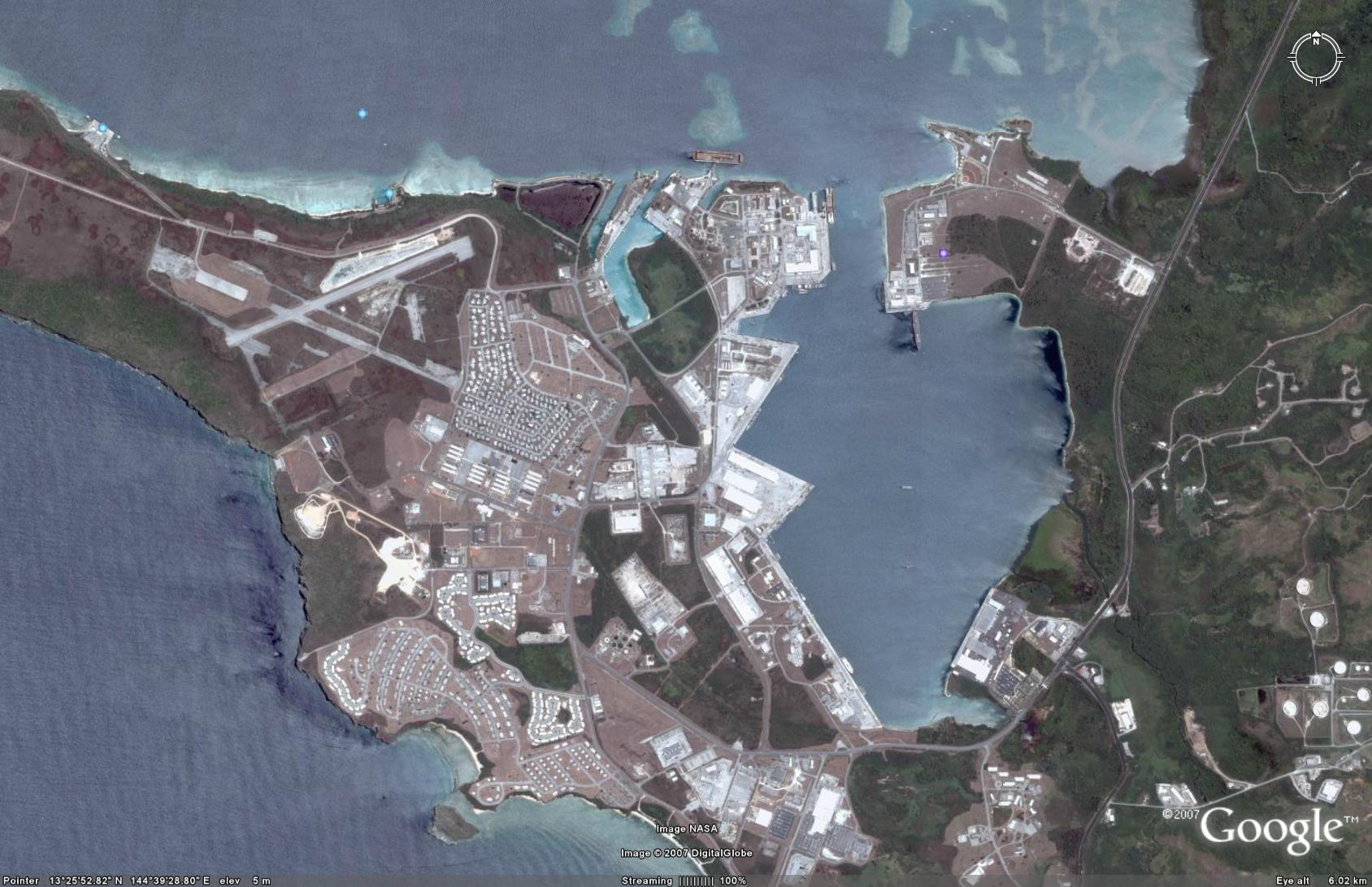The USS Charleston Says Hello with Gunpowder August 30, 2012
Author: Beach Combing | in : Modern , trackbackBeach has been negligent in his duties in the last three weeks, particularly where comments are concerned. However, he’s going to try and make up for this in the next 48 hours by going through several hundred emails – sorry! – and splashing print everywhere. His excuse for this negligence? Well, he’s written half a book of articles – about 40,000 words – and not shaved as much as he should have: he’s also seeing footnotes whenever he closes his eyes.
September though will be bizarre history month! He (kind of) promises. Which leads us to the USS Charleston’s adventures on Guam in the Spanish American war. Guam, with its harbour at Apra, was a ‘strategic node’ – as policy wonks would have it – and was used by the US for coal and petroleum storage right up to the time of the Second World War – one of the reasons so many Japanese and Americans died on its inhospitable terrain. But, for now, we are back in the days when Guam spoke Spanish and when the Governor wrote his reports to Madrid. The main Spanish settlement was guarded by three forts and no one was going to waltz in to take over this island without some very loud sabre-rattling.
Spanish administration was, however, poor. Consider two facts. First, the three forts and their guns had slowly fallen out of use. So in 1853, a half century after its conclusion, Governor Felipe de la Corte had reported that, in some ways the most impressive fort, Santiago, was useless as a firing point: its canons had fallen into disrepair. Second, Madrid and Guam had only intermittent contact and, as will soon become apparent, Guam didn’t see many ships period. Spain, for example, had declared war on the US on 23 April 1898, after a long and painful prelude, and yet two months later the Spaniards on Guam had absolutely no idea that the motherland was fighting the Yankees for New World survival.
We know this because 20 June 1898, the USS Charleston under one Captain Glass sailed into the harbour at Apra determined to roll up any resistance on this obscure Spanish possession. And she, reasonably enough, opened fire on Fort Santa Cruz with its Spanish flag. Captain Glass on the Charleston may have been expecting rigorous resistance, he may have been expecting a white flag. What he certainly did not expect was a launch to set out from the Fort towards his ship. The launch carried a message. The Spanish wished to express deep regret that they could not return the salute, which the American captain had honoured them with, but they were clean out of gunpowder…
Beach has been able to find contemporary accounts (one dating from 1900), but no eye-witness descriptions of the scene. (Does one exist: drbeachcombing AT yahoo DOT com?) It must have been precious though. The jovial Spanish office jumping onto the ship with outstretched arms: the starchy Americans looking at their shoes as they realised that news of the war had not reached the island. (‘Who’s going to tell him?’ ‘You!’ ‘No, you!’ ‘Thompson, do you speak Spanish?’) In any case, the news was communicated and a day later Guam surrendered to the men with gunpowder. Thinking about it the Spanish had got one sly jab in: for their mistake hardly speaks well of American marksmanship.
Just as a point of curiosity it should be noted that there has been some legend mongering here. The story seems to be a true one: as noted above a 1900 history – which is sobre to the point of tedium – reports Glass’ adventures at Guam. But later accounts give slightly expanded versions of the exchange. There is, for instance, the claim that the Spanish asked to borrow gunpowder so that they could return the salute. It is also sometimes claimed that the governor came up to the Charleston in the launch: something that Beach can’t imagine any Spaniard with a peacock feather in his hat doing. But then why, as Beachcombing’s gran used to put it, spoil a good story with the truth?



